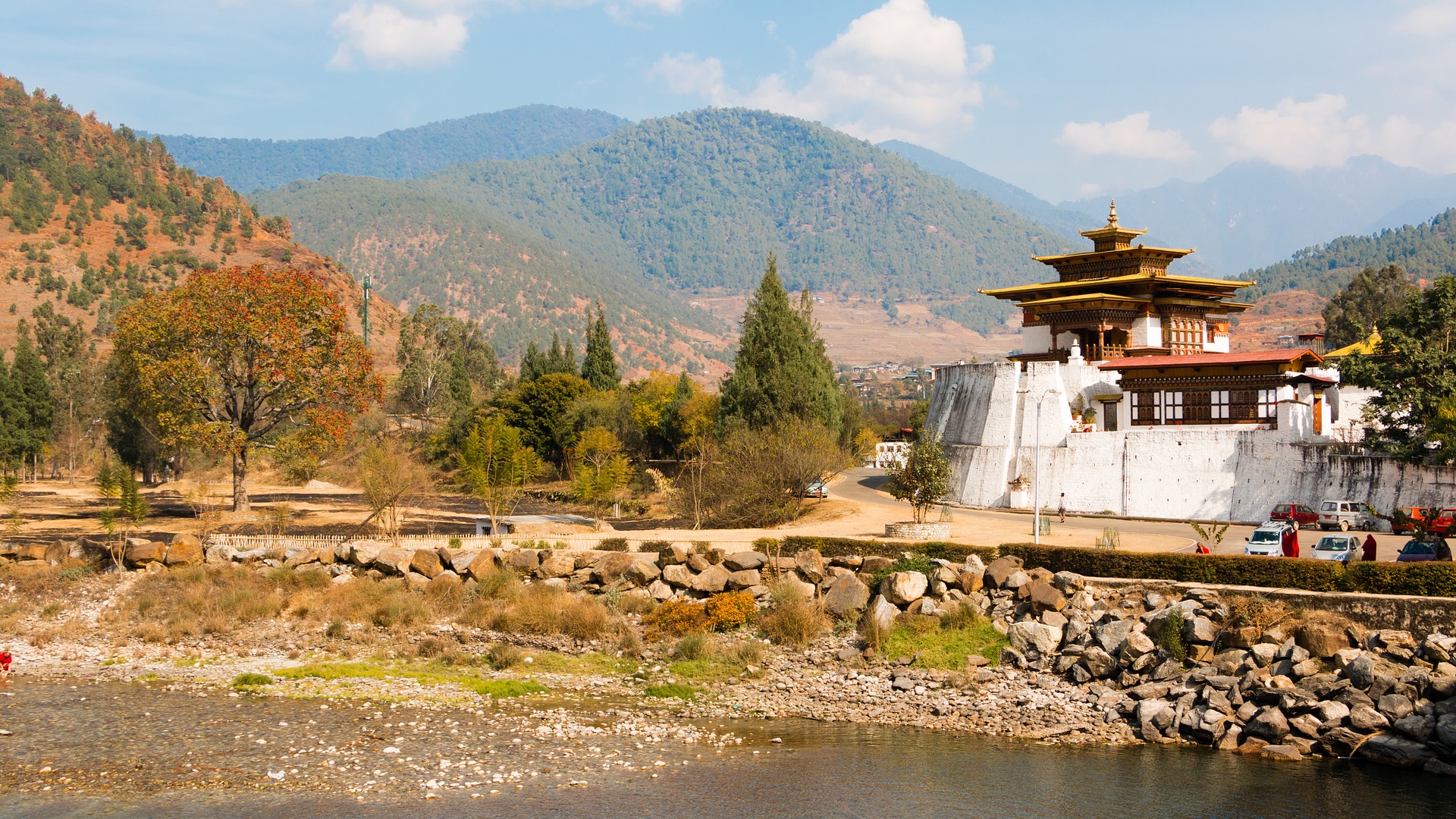Located at the eastern end of the Himalayas, Bhutan is often referred to as one of the happiest nations in the world. It’s a land of high mountains and rolling valleys, left nearly untouched by colonization years before and, until 1974, was not open to tourist.
Today, the Kingdom of Bhutan operators on a “High Value with Low Impact” model of tourism and in 2014, just over 100,000 visitors entered Bhutan.

High Value With Low Impact
Many believe that Bhutan puts a limit to the number of tourists that may enter the country each year. However, this is not entirely true. Rather than restricting tourists to a certain number, Bhutan has very strict entry requirements.
Travelers to Bhutan must be with an approved tour operator who will arrange all travel while in the country and arrive via Druk Air, which offers a limited number of flights from a handful of cities in Asia.
Additionally, all visitors must pay a daily tariff, starting at $200 per day during the low season. However, the daily tariff involves most necessary expenses during a trip, including a 3 star hotel, all meals, a licensed Bhutanese tour guide, internal transportation, and equipment for treks.
$65 from this daily tariff is considered “sustainable tourism” royalty which is used towards the country’s free health-care and education, as well as the building of tourism infrastructure.
Low Tourism Impact On Bhutan
As a result of the high daily tariff, fewer travelers are visiting Bhutan. However, as Andy of One World Trekking notes, “The people who want to go, will always go. When you consider all that the daily tariff includes…this is really not much more or much different than other Himalayan countries.”
Mollie Fitzgerald, named a travel expert by Conde Nast Traveler concurs, saying that, “I believe that this [the daily tariff] is to the traveler’s benefit– logistics are not easy in Bhutan and using the experience of a credible tour operator should enhance one’s experience and help the visitor maximize their stay.” With no railways and limited transportation and accommodation options, it’s easy to see why a required tour guide would be a help to travelers in the country.
Additionally, for travelers, heading to Bhutan can be like taking a step back in time. Without the western influence that many neighboring countries see, the Bhutanese have been able to stay true to their cultural. Buddhism is the predominant religion and many temples, a few of which visitors may enter, are still in use, and locals are still required to wear traditional dress.
For the Bhutanese, limiting tourists to those who are able to afford the daily tariff has ensured that respectful travelers visit. Those who are ready to party in a hostel and travel on a budget head to India. It’s also ensured that Bhutan becomes a vacation destination – not a place to travel and live cheaply long-term.
The slow increase of tourism has allowed infrastructure to grow accordingly, without destroying the environment, though there is always a looming possibility of tourism bringing too much change. Additionally, the government cut of the daily tariff has improved their free healthcare and education system, as well as alleviating poverty.
Contributed By Sky Fisher

Jessica Festa is the editor of the travel sites Jessie on a Journey (http://jessieonajourney.com) and Epicure & Culture (http://epicureandculture.com). Along with blogging at We Blog The World, her byline has appeared in publications like Huffington Post, Gadling, Fodor’s, Travel + Escape, Matador, Viator, The Culture-Ist and many others. After getting her BA/MA in Communication from the State University of New York at Albany, she realized she wasn’t really to stop backpacking and made travel her full time job. Some of her most memorable experiences include studying abroad in Sydney, teaching English in Thailand, doing orphanage work in Ghana, hiking her way through South America and traveling solo through Europe. She has a passion for backpacking, adventure, hiking, wine and getting off the beaten path.








